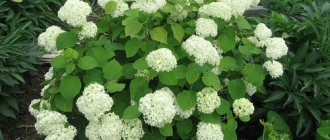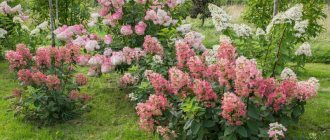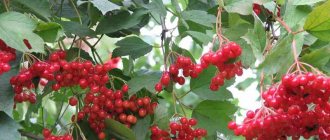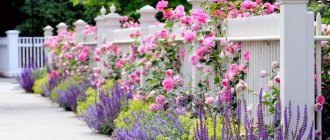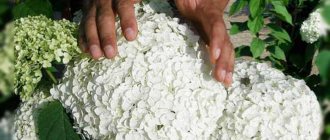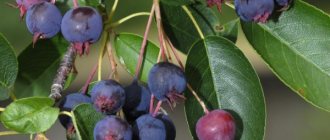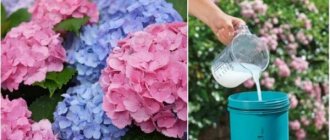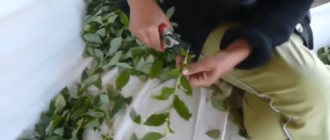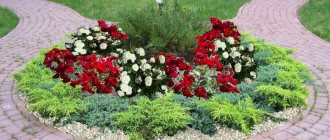Description
In nature, hydrangea comes in shrubby (up to 3 meters in height), tree-like and liana-like forms. Also, depending on the species, this plant can be evergreen or deciduous.
Looking at the photo of hydrangea, you can see that its leaves are large, oval, oppositely located, usually with a jagged edge. The plant has a long flowering period.
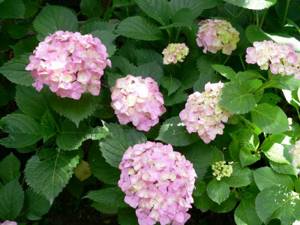
Flowers form inflorescences, which can be corymbose, spherical or paniculate in shape. The color of the petals is most often white, although today plants with cream, blue, and red flowers are also bred.

Hydrangea paniculata: the best varieties
The most popular species with a huge number of varieties. The plant owes its name to the shape of the inflorescences, which resemble a panicle (15-24 cm in length). The stunning appearance of Hydrangea paniculata is complemented by the excellent characteristics of the species for growing in low winter temperatures.
The plant is a tall shrub (190-280 cm) with a dense crown, leaves 8-11 cm in length. It blooms in mid-June and lasts until early October. Due to the ease of formation and strength of the stems, it can be grown in standard form - like a tree.
Hydrangea paniculata "Vanille Fraise"
The number 1 most popular variety is also known under the brand name “Renhy”. The fruit of the French breeder - Eric Renault. Height 160-190 cm. Large pyramidal racemose inflorescences reminiscent of an ice cream cone. Blooms from July to the end of September. Powerful flowering.
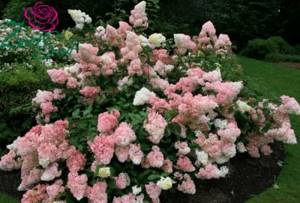
Hydrangea paniculata "Vanille Fraise"
Hydrangea paniculata "Grandiflora"
A very famous variety. Large flowers in large inflorescences (21-28 cm) with varying colors. At first creamy white, then pure white, turning to pink, and in the fall adding a greenish tint with a slight red.
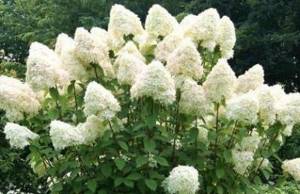
Hydrangea paniculata "Grandiflora"
Hydrangea paniculata "Diamond Rouge"
The variety was bred by the same French nursery as Vanilla Fraze. Height 130-160 cm. Compact form with beautiful flowering. The inflorescences on young shoots are large (30-40 cm). Rich red color. Blooms from late June to September.

Hydrangea paniculata "Diamond Rouge"
Hydrangea paniculata "Limelight"
A variety with the maximum size of inflorescences of all this species - up to 55-60 cm in favorable conditions. Height 170-200 cm. Lush white inflorescences with a slight greenish tint, turning into a creamy color. Blooms from late July to early September.

Hydrangea paniculata "Limelight"
Hydrangea paniculata "Phantom"
Another record holder for the size of inflorescences - up to 50-55 cm. The height of the bush is 170-200 cm with a beautiful shape. The conical inflorescences are creamy with a slight pink tint. High winter hardiness. Blooms powerfully from July to September.

Hydrangea paniculata "Phantom"
Popular varieties
- Bobo, Wim's Red, Great Star, Diamantino, Kyushu, CandleLight, Levana Levana), “Little Lime”.
- Mega Mindy, Magical Candle, Magical Moonlight, Magical Fire, Pink Diamond, Pink Lady Pink Lady), "Pinky Winky".
- Polar bear, Sundae Fraise, Silver Dollar, Tardiva, Fraise Melba and Unique (Unique).
Planting and caring for red hydrangea
The basic steps for planting and caring for red hydrangeas are not difficult. For outdoor cultivation, the correct choice of planting site is of great importance. In addition, the plants will require regular watering, fertilizing, and light pruning. If the shrub is left to winter in place, then it must be covered, otherwise it will die or will not bloom.
Selection and preparation of a landing site
Red large-leaved hydrangeas love light, but they must be protected from direct sunlight. In the southern regions, it is allowed to plant these plants in partial shade, however, the further north, the more illuminated the area should be. The shrub does not like the cold north wind, so you need to choose a protected place for it. The soil should be light and breathable, well drained. Hydrangeas love moisture, but too much of it can kill them. They should not be planted in an area with a high groundwater level, on saline soils, or in places where water stagnates after rains or melting snow.
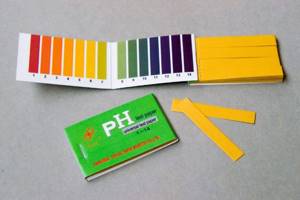
Soil acidity is of great importance; you can check it with litmus papers
Important! Before planting large-leaved hydrangea, be sure to check the acidity of the soil. A slightly acidic soil reaction is optimal for these plants.
How to plant red hydrangea
Seedlings of red varieties of large-leaved hydrangea are usually sold in containers. It is best to replant them in open ground in early spring, before the plant begins its growing season, and in the fall. Having decided on the landing site, you need to dig a landing hole in advance. Approximately its dimensions should be 0.5 m in diameter and 0.4 m in depth, but it is more advisable to determine this indicator based on the size of the container in which the hydrangea root system is located.
Important! The volume of the planting hole should exceed the size of the root system of the hydrangea seedling by approximately 3 times.
You should also prepare the soil mixture in advance, which will be used to fill the planting hole after planting the seedling. The best option would be to mix the excavated soil with humus in a 1:1 ratio, and also add 0.5 parts of sand and peat to the mixture. To increase acidity, dry pine needles can be added to the soil composition. Be sure to provide drainage. To do this, pour a layer of large pebbles or expanded clay onto the bottom of the pit.

The planting pit must be guaranteed to accommodate the root system of the flower.
Before removing the seedling from the container, you should spill it with plenty of water in advance. There is no need to shake off the soil from the roots. The seedling is installed vertically in the planting hole so that its root collar is flush with the ground surface. If necessary, you can add a little soil to the hole. Having installed the seedling at the desired height, the hole is completely filled with soil mixture, compacted, watered abundantly, and then the root zone is mulched with the bark of coniferous trees.
Watering and fertilizing
The Latin name for hydrangea is Hydrangea, literally translated as “water container.” Indeed, this is a very moisture-loving plant. However, excessive watering can only harm it. In conditions of insufficient natural humidity and lack of precipitation, hydrangeas are watered at least once a week at the rate of 1 bucket for each adult bush. During the flowering period, this figure can be doubled. For irrigation, you should use only rainwater, since artesian and tap water often have increased hardness, and this reduces the acidity of the soil.
Important! You can determine the hardness of water by washing your hands in it with soap. Hard water will quickly wash away soap, while soft hands will remain “soapy” to the touch for a long time.
To feed red hydrangeas, you can use special long-acting fertilizers (Fertika, Pokon, etc.). They are sold in specialized stores for flower growers.

Using specialized fertilizers is more convenient
You can also use conventional organic and mineral fertilizers. Such fertilizing is applied several times per season, using the root method, according to the following schedule:
- Early spring - urea, aqueous solution, 30-35 g per 1 sq. m.
- Budding phase – superphosphate + potassium salt, aqueous solution, 20-30 g of each component per 1 square meter. m.
- 15 and 30 days after the previous feeding - the same composition.
- After flowering - humus or rotted manure, 10-15 kg for each bush.
Pruning hydrangea with red flowers
As a rule, red large-leaved hydrangeas are pruned quite rarely. This procedure can be used as a sanitary procedure to remove broken or dried shoots. In addition, to rejuvenate the bush, it is recommended to trim all shoots at a distance of 35-40 cm from the ground once every 4 years. Some old shoots can be removed at the root if the bush becomes very thick. Hydrangeas are pruned in early spring, before the growing season begins.
Preparing for winter
The easiest way to prepare hydrangeas for winter are those that grow in containers; they just need to be taken to a storage room. If the plant is planted in open ground and is expected to winter in the same place, then the preparation must be thorough. It is easiest to prepare low bushes for winter; you can simply cover them with earth, and then sprinkle them with fallen leaves, additionally covering them with lutrasil.

Sheltering hydrangeas for the winter is mandatory for areas with unfavorable climates.
Older bushes need more serious shelter. Usually, in adult plants, the shoots are tied into several bunches, and then they are bent to the ground in different directions from, having previously placed a thick layer of spruce branches under each of them. After this, they are fixed in this position. Then a layer of dry leaves is poured on top, spruce branches are laid, and covering material is pulled over it.
Growing from seeds
The best time for this is autumn. Recommended soil composition: peat and leaf soil with sand in a ratio of 2 to 4 to 1. Planted seeds require covering with glass or film. It is necessary to ventilate the container a couple of times a day.

The ideal temperature is 14 - 20°C. Young plants need to be pricked twice: the first time as soon as the cotyledon lobes begin to develop, the second time in March. After the last picking, young flowers must begin to be hardened off.

Name
Hydrangea
(lat.
Hydrángea
) is a genus of flowering plants in the Hydrangeaceae family, consisting of approximately 70-80 species.
The flower received its name in honor of Princess Hortense, the sister of the prince of the Holy Roman Empire.

Hydrangea
A little later, European botanists gave the flower the name Hydrangea, which translated means “vessel of water” (Greek ὕδωρ - water, ἄγγος - vessel). According to one version, the name was given to hydrangea for the shape of the seed pods, reminiscent of a jug, according to another - for its moisture-loving nature.
The Japanese name is Ajisai.
Top dressing
Gardeners advise applying fertilizer twice a year: before and after flowering. The first time it is better to use urea (2 g per 1 liter of water).

The second feeding should be done with a complex mineral composition. During the summer, it is appropriate to fertilize garden hydrangea with liquid manure.
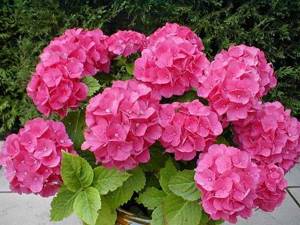
Propagation by cuttings
After pruning, the cut stems can be used as cuttings. Each cutting should have one straight and one oblique node.
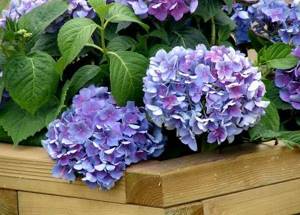
Planting material should be planted in a container with peat-sandy soil, watered thoroughly and covered with film. As soon as the roots appear, the seedlings can be planted in a permanent place.

Preparatory work
You need to cover the flowers in October after the first frost. It is recommended to cover young seedlings with dry soil. Tall bushes should be pressed to the ground and covered with roofing felt. The shelter must be securely fixed.
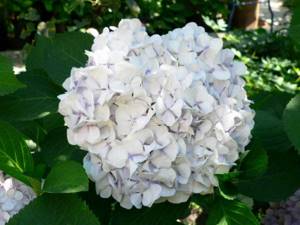
Types of hydrangeas
It is believed that there are 30-80 species of this plant. The most popular is hydrangea:
- tree-like;
- paniculata;
- large-leaved;
- oakleaf;
- ground cover.

Externally, it is a shrub, 1-3 m high. Inflorescences are formed on annual stems. The buds are light green in color, the blooming flowers are cream or white.
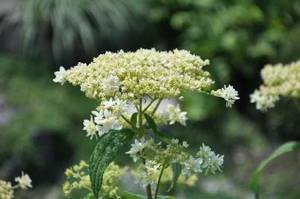
If you decide to plant hydrangea on your site, then you should carefully familiarize yourself with all the features of this plant and choose exactly the varieties that will be ideal for your garden.
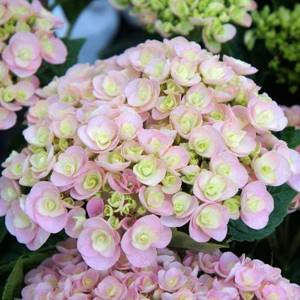
Hydrangea in landscape design
The beauty of a flower bed largely depends on how the hydrangea looks. Photos of many garden plots fascinate with their amazing beauty thanks to the lush flowering of this plant. The fantastically beautiful hydrangea inspires the creation of original compositions in the design of a garden plot, for example, as in the photo of a hydrangea flower planted near a fence.
In accordance with the climatic conditions of Russia, it is recommended to plant paniculate, tree and petiole hydrangeas. When they grow, it is impossible to take your eyes off the fantastic beauty of the large inflorescences.
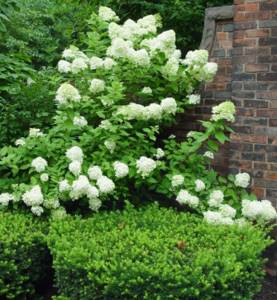
Many landscape designers advise emphasizing the beauty of hydrangea with borders of cotoneasters, spirea and other ornamental shrubs. In a flower garden, it is better to plant this plant in the background so that it does not block other plants.
You should not combine hydrangea with flowers in orange, yellow and red shades. The hydrangea bush (seen in the photo in the compositions) can be successfully shaded by bluish flowers, conifers, cereals, clematis, low-growing junipers and hostas. The classic is a combination of hydrangea with phlox with round pink inflorescences, microbiota and thuja. The bush of the plant is used both in compositions along paths and as a hedge.
Hydrangea, which is the basis of a fabulously beautiful garden, with careful care will delight you for a long time with its magnificent flowering. You can endlessly experiment with different types and varieties of this wonderful shrub. For example, you can decorate a gazebo with climbing hydrangea, plant a tree-like variety along the paths, and also use paniculata to create a beautiful hedge.
A real joy for any gardener is the blooming of hydrangeas in the garden. Photos of amazing landscapes with them are an incentive to action.

